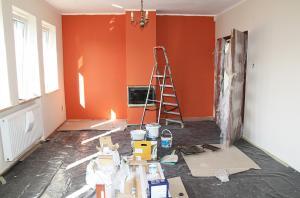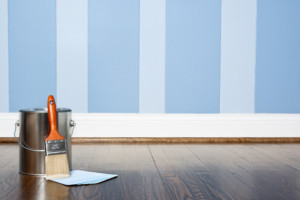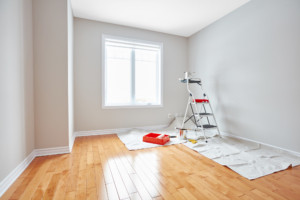What should you ask before you commit to hiring a professional painting service contractor? Here’s what to ask before signing a painting service contract:
Whether you’re trying to sell your home or improve its curb appeal, a coat of paint can go a long way. In fact, a fresh coat can even improve the value of your home.
Homes with no color sell for an average of $4,035 less than similar properties. Even adding a coat of light blue paint to the bathroom could help increase the value by $5,440.

House Painting and Renovations Contract
Are you thinking of hiring professional painting services to give your home an upgrade? It’s important to find a professional you can trust. Here are six questions you can ask during your search.
By asking these questions, you can narrow down your options to find the professional painting service you need.
Start your search with these tips today!
1. What Experience Do You Have?
First, take the time to speak with friends, family members, and neighbors in the area. Have any of them paid for professional painting services recently? Ask about their experience.
Would they recommend the same painter, or do they suggest you look for someone else? Speaking with people in your inner circle will help you narrow down your options.
It also gives you a unique insight into local painting companies. Instead of asking the painter all your questions, you can speak with someone like you: a customer.
Once you have a list of painters in the area, research their business. You can start by visiting the Better Business Bureau website.
Is each painter on your list a member of the BBB? Are they a part of any other trade associations? If so, they’re likely committed to their trade.
Ask how long the company has run and operated. A long-running company has likely outlasted other companies in the area. This indicates they’ve won the trust of their customers.
If you choose an inexperienced company, on the other hand, you might come across problems. They’re likely still working out kinks in their business model. They could even lack the resources necessary to finish your project.
Employees
Make sure their employees are experienced as well. Who will work on your home? How long have they provided professional painting services?
Ask the company’s owners if they run criminal background checks on their employees. It also helps to ask if they hire employees or subcontractors. If it’s the latter, there’s a chance they can’t thoroughly vouch for the painter’s skill set.
Choose someone who is experienced. Otherwise, you might not receive the quality services you were expecting.
2. Are You Licensed and Insured?
As you interview companies that offer painting services, prioritize looking for a company that’s licensed and insured.
Are they licensed for both commercial and residential properties? Some licenses only cover one or the other. Make sure the company has the licenses necessary to finish your project.
Some licenses might vary depending on the scope of your painting project, too. Are you looking for an interior painting service or exterior? Make sure the company is qualified to provide the services you need.
Don’t forget to look into their insurance coverage, too.
What if an accident occurs while the painters are working on your property? Are you expected to cover the damages and expenses?
Instead, choose a professional painting service from a company with comprehensive business liability. If anything does happen, you’ll have peace of mind that you’re covered.
3. Do You Have Customer Testimonials?
Remember, you don’t have to believe a company at its word. Instead, ask if you can speak with some of their recent clients.
Make sure these clients hired the painting company within the past year. That way, you’ll have a better idea of their current capabilities.
Ask the customers about their experience working with the painting company. Were there any incidents? Did the finished product meet their expectations?
You can also find reviews on the Better Business Bureau website or the company’s Google My Business listing.
Reading reviews and speaking with clients will help you learn about the company’s painting services from an unbiased source.
4. Can I See Photos of Past Projects?
To truly make sure the company meets your expectations, ask to see photos of their recent projects. Make sure the photos match the scope of your own project.
For example, if you need an interior painting service, ask to see photos of the same rooms you want painted.
Do the photos meet your standards and expectations? How recent were those projects completed?
If the photos don’t meet your expectations, keep searching.
5. What Materials Do You Use?
You can also ask each painting company about the materials they use. Are they using cheap, sub-par materials? If the company is cutting costs, the color likely won’t last long.
Weather, time, and general wear and tear can cause the paint to fade. If you need exterior painting, sun exposure can also cause discoloration.
During your search, make sure to prioritize finding a company that uses high-quality paints. Otherwise, you’ll end up needing your property repainted down the road.
6. Do You Offer a Warranty?
It’s important to get quotes from at least three companies in the area. That way, you can compare their prices and find someone who fits your budget.
Some painters ask for $4,000 in labor and materials for painting the exterior of a 2,500-square-foot home. The interior might cost around $5,500.
Don’t hire the least expensive contractor, though. Instead, make sure they’re capable of meeting your expectations.
What’s included in the estimate? Are labor and material costs calculated?
Is there a warranty? Some companies offer a one- to three-year warranty for their services. Ask what the warranty covers, such as materials and labor.
Get everything you discuss in writing, too. That way, you can avoid any disputes in the future.
Don’t forget to review the entire contract before you sign on the dotted line.
Get a Fresh Coat: 6 Questions to Ask Before Hiring Painting Services
Ready to give your property a fresh coat of paint? Make sure to ask these six questions before you hire painting services. By asking these questions, you can find the best company for the job!
Want to discuss your next painting project? We’re happy to help.
Get a free quote from our team today!





 How do you choose between interior painting services in town? You want to hire someone who will do a great job on your home or commercial building, but how do you know which one is best when they all have great reviews on their websites? What sets them apart?
How do you choose between interior painting services in town? You want to hire someone who will do a great job on your home or commercial building, but how do you know which one is best when they all have great reviews on their websites? What sets them apart?


